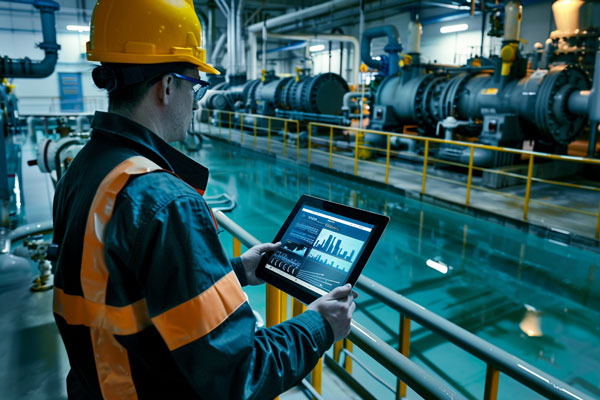The pump industry is on the brink of a technological revolution. Innovations such as Artificial Intelligence (AI) and the Internet of Things (IoT) are poised to transform how pumps are designed, operated, and maintained. Let’s explore the potential impacts and application prospects of these technologies in the pump industry.
Future technological innovations like AI and IoT will significantly enhance the efficiency, reliability, and operational capabilities of the pump industry, driving advancements in monitoring, maintenance, and performance optimization.
Want to understand how AI and IoT will revolutionize the pump industry? Dive into the details of these groundbreaking technologies.
Introduction to Technological Innovations in the Pump Industry
The pump industry has always been a critical component of various sectors, including water treatment, oil and gas, and manufacturing. As we move into the future, the integration of advanced technologies like AI and IoT promises to enhance the efficiency, reliability, and capabilities of pumps.
Exploring the versatility of Yaness rotary lobe pumps provides a deeper understanding of our current technological capabilities.
Artificial Intelligence in Pump Operations
Predictive Maintenance
AI enables predictive maintenance by analyzing data from sensors and historical records to predict when a pump is likely to fail. This allows for timely maintenance, reducing downtime and preventing costly breakdowns.
Performance Optimization
AI algorithms can optimize pump performance by adjusting operational parameters in real-time based on varying conditions. This ensures that pumps operate at their highest efficiency, saving energy and reducing operational costs.
Fault Detection
AI systems can detect anomalies and potential faults in pumps before they become serious issues. By continuously monitoring performance metrics, AI can identify patterns that indicate wear or impending failure, allowing for proactive maintenance.
For more insights into AI’s role, the function of rotary lobe pumps highlights how these systems integrate with advanced technologies.
Internet of Things (IoT) in Pump Monitoring
Real-Time Monitoring
IoT devices enable real-time monitoring of pump systems. Sensors connected to the internet can provide continuous data on various parameters such as pressure, temperature, and flow rate. This data can be accessed remotely, allowing operators to monitor pump performance from anywhere.
Remote Diagnostics
IoT technology allows for remote diagnostics of pump systems. Technicians can access real-time data and diagnose issues without being physically present at the site, making maintenance more efficient and reducing response times.
Automated Control Systems
IoT integrates with automated control systems to adjust pump operations based on real-time data. For example, if a sensor detects a drop in pressure, the system can automatically adjust the pump speed to compensate, ensuring optimal performance.
The role of a gearbox in a lobe pump demonstrates how these technologies enhance operational efficiency.
Practical Applications of AI and IoT in the Pump Industry
Water Treatment
In water treatment facilities, AI and IoT can optimize the operation of pumps to ensure consistent water quality and efficient energy use. Predictive maintenance can prevent failures that could disrupt the water supply.
Oil and Gas Industry
The oil and gas industry can benefit from AI and IoT by enhancing the reliability of pumps used in extraction and transportation. Real-time monitoring and remote diagnostics ensure that pumps operate smoothly in harsh conditions.
Manufacturing
In manufacturing, AI and IoT can streamline production processes by optimizing pump performance and reducing downtime. Automated control systems can adjust pump operations to meet the demands of different production stages.
Detailed information about pump applications is available on the Yaness Rotary Lobe Pump page.
Future Prospects and Challenges
Enhanced Efficiency and Sustainability
The integration of AI and IoT in pump systems promises significant improvements in efficiency and sustainability. By optimizing energy use and reducing waste, these technologies can help industries meet environmental regulations and reduce operational costs.
Data Security
One of the challenges in implementing IoT technology is ensuring data security. Protecting sensitive data from cyber threats is crucial to maintaining the integrity of pump systems and preventing unauthorized access.
Workforce Adaptation
Adapting the workforce to new technologies is another challenge. Training and upskilling employees to work with AI and IoT systems will be essential for successful implementation.
Understanding maintenance tips for rotary lobe pumps can provide insights into how these innovations improve maintenance practices.
Conclusion
The future of the pump industry is set to be transformed by technological innovations such as AI and IoT. These advancements will enhance the efficiency, reliability, and operational capabilities of pumps, driving progress in monitoring, maintenance, and performance optimization. Embracing these technologies will enable industries to achieve greater sustainability and operational excellence.


